The Guardian has published a fantastic report, entitled the Sugar Conspiracy, which argues that sugar, not fat, is behind the world’s rising ‘diabesity’ (diabetes and obesity), and questions how the world’s nutritional scientists got it “so wrong for so long”:
In 1972, a British scientist [John Yudkin] sounded the alarm that sugar – and not fat – was the greatest danger to our health. But his findings were ridiculed and his reputation ruined. How did the world’s top nutrition scientists get it so wrong for so long?…
We read almost every week of new research into the deleterious effects of sugar on our bodies…
This represents a dramatic shift in priority. For at least the last three decades, the dietary arch-villain has been saturated fat. When Yudkin was conducting his research into the effects of sugar, in the 1960s, a new nutritional orthodoxy was in the process of asserting itself. Its central tenet was that a healthy diet is a low-fat diet. Yudkin led a diminishing band of dissenters who believed that sugar, not fat, was the more likely cause of maladies such as obesity, heart disease and diabetes. But by the time he wrote his book, the commanding heights of the field had been seized by proponents of the fat hypothesis. Yudkin found himself fighting a rearguard action, and he was defeated. Not just defeated, in fact, but buried…
In 1980, after long consultation with some of America’s most senior nutrition scientists, the US government issued its first Dietary Guidelines. The guidelines shaped the diets of hundreds of millions of people. Doctors base their advice on them, food companies develop products to comply with them. Their influence extends beyond the US. In 1983, the UK government issued advice that closely followed the American example.
The most prominent recommendation of both governments was to cut back on saturated fats and cholesterol (this was the first time that the public had been advised to eat less of something, rather than enough of everything). Consumers dutifully obeyed. We replaced steak and sausages with pasta and rice, butter with margarine and vegetable oils, eggs with muesli, and milk with low-fat milk or orange juice. But instead of becoming healthier, we grew fatter and sicker.
Look at a graph of postwar obesity rates and it becomes clear that something changed after 1980. In the US, the line rises very gradually until, in the early 1980s, it takes off like an aeroplane. Just 12% of Americans were obese in 1950, 15% in 1980, 35% by 2000. In the UK, the line is flat for decades until the mid-1980s, at which point it also turns towards the sky. Only 6% of Britons were obese in 1980. In the next 20 years that figure more than trebled. Today, two thirds of Britons are either obese or overweight, making this the fattest country in the EU. Type 2 diabetes, closely related to obesity, has risen in tandem in both countries.
At best, we can conclude that the official guidelines did not achieve their objective; at worst, they led to a decades-long health catastrophe…
Today, as nutritionists struggle to comprehend a health disaster they did not predict and may have precipitated, the field is undergoing a painful period of re-evaluation. It is edging away from prohibitions on cholesterol and fat, and hardening its warnings on sugar, without going so far as to perform a reverse turn…
In 2008, researchers from Oxford University undertook a Europe-wide study of the causes of heart disease. Its data shows an inverse correlation between saturated fat and heart disease, across the continent. France, the country with the highest intake of saturated fat, has the lowest rate of heart disease; Ukraine, the country with the lowest intake of saturated fat, has the highest. When the British obesity researcher Zoë Harcombe performed an analysis of the data on cholesterol levels for 192 countries around the world, she found that lower cholesterol correlated with higher rates of death from heart disease.
In the last 10 years, a theory that had somehow held up unsupported for nearly half a century has been rejected by several comprehensive evidence reviews, even as it staggers on, zombie-like, in our dietary guidelines and medical advice…
The UN’s Food and Agriculture Organisation, in a 2008 analysis of all studies of the low-fat diet, found “no probable or convincing evidence” that a high level of dietary fat causes heart disease or cancer. Another landmark review, published in 2010, in the American Society for Nutrition, and authored by, among others, Ronald Krauss, a highly respected researcher and physician at the University of California, stated “there is no significant evidence for concluding that dietary saturated fat is associated with an increased risk of CHD or CVD [coronary heart disease and cardiovascular disease]”.
Many nutritionists refused to accept these conclusions…
Biochemists and endocrinologists are more likely to think of obesity as a hormonal disorder, triggered by the kinds of foods we started eating a lot more of when we cut back on fat: easily digestible starches and sugars…
Fat takes instruction from insulin, the hormone responsible for regulating blood sugar. Refined carbohydrates break down at speed into glucose in the blood, prompting the pancreas to produce insulin. When insulin levels rise, fat tissue gets a signal to suck energy out of the blood, and to stop releasing it. So when insulin stays high for unnaturally long, a person gains weight, gets hungrier, and feels fatigued…
The article is a brilliant dissection of the nutritional debate – possibly the best that I have read in a newspaper since Gary Taubes wrote “What if It’s All Been a Big Fat Lie?” way back in 2002.
The sad thing is that Australia’s nutritional science establishment is yet to move on from the “saturated fat is bad, carbohydrate is good” mindset, which is why both the Government’s Health Star Rating system and the National Heart Foundation Tick program are fundamentally flawed.
Consider the below farcical examples of these programs.
How is it that natural virgin coconut oil receives only a half star health rating (because it contains over 90% saturated fat):
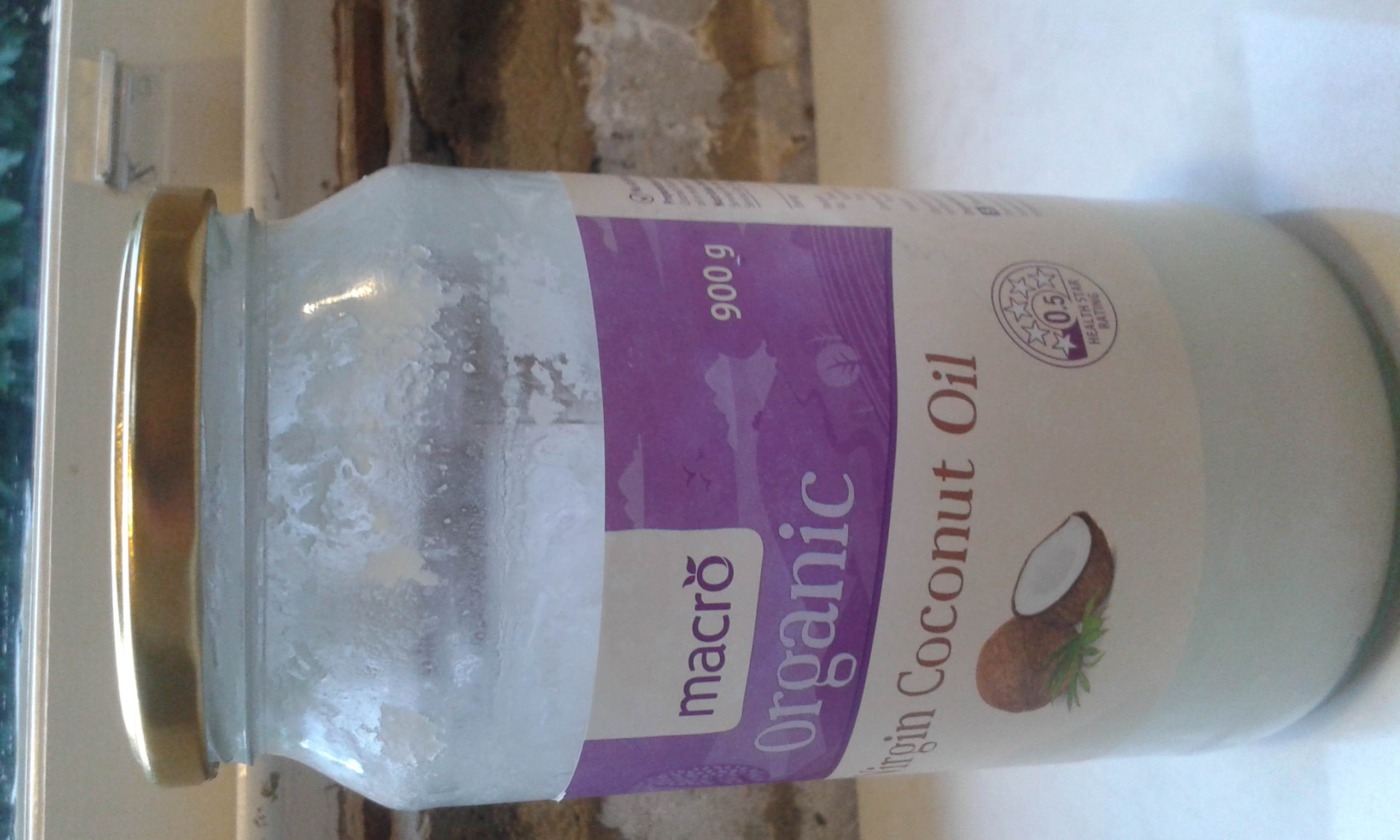
And natural full fat Greek yogurt receives only 1.5 stars:
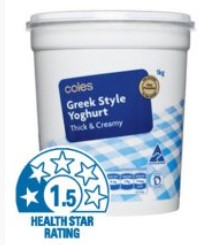
When highly processed margarine, chock-full of inflammatory omega-6 polyunsaturated oils, receives the Heart Foundation tick:
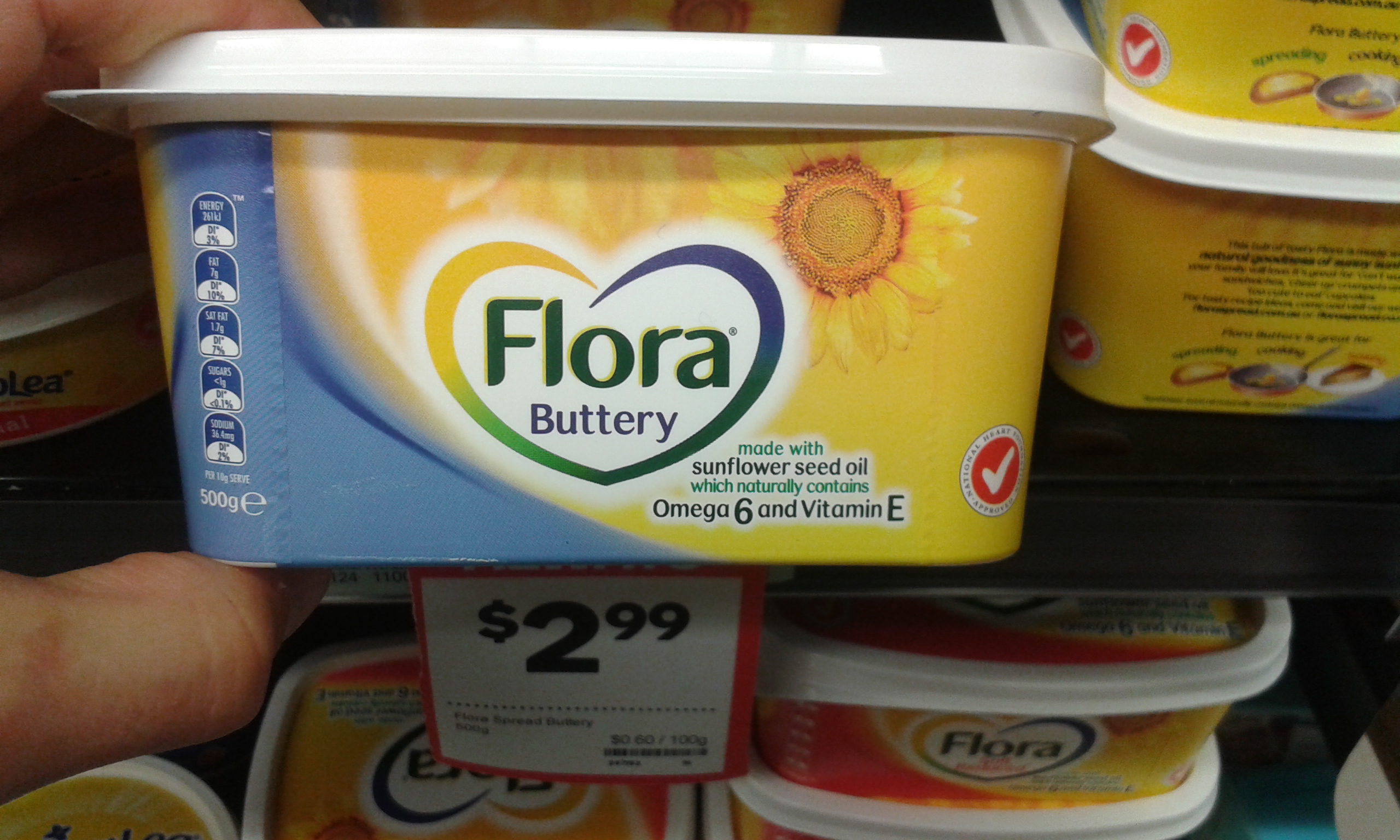
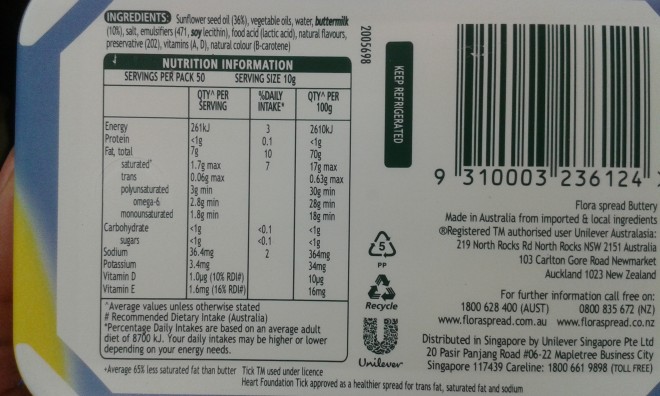
And sugary low fat yogurt receives a 3-star health rating:

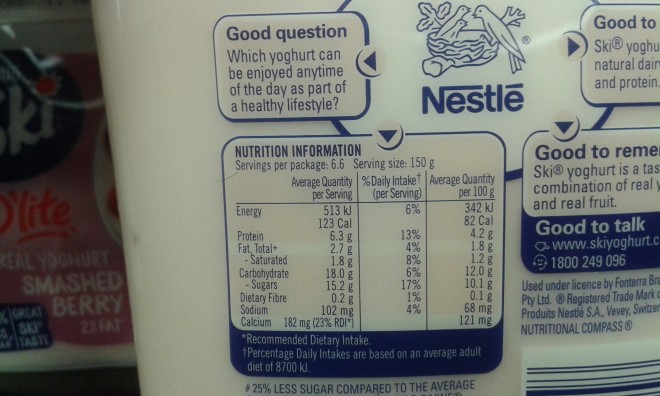
The farce is even worse when it comes to breads and cereals.
Somehow crappy processed white bread, which is guaranteed to spike your blood sugars and insulin, receives the Heart Foundation tick:

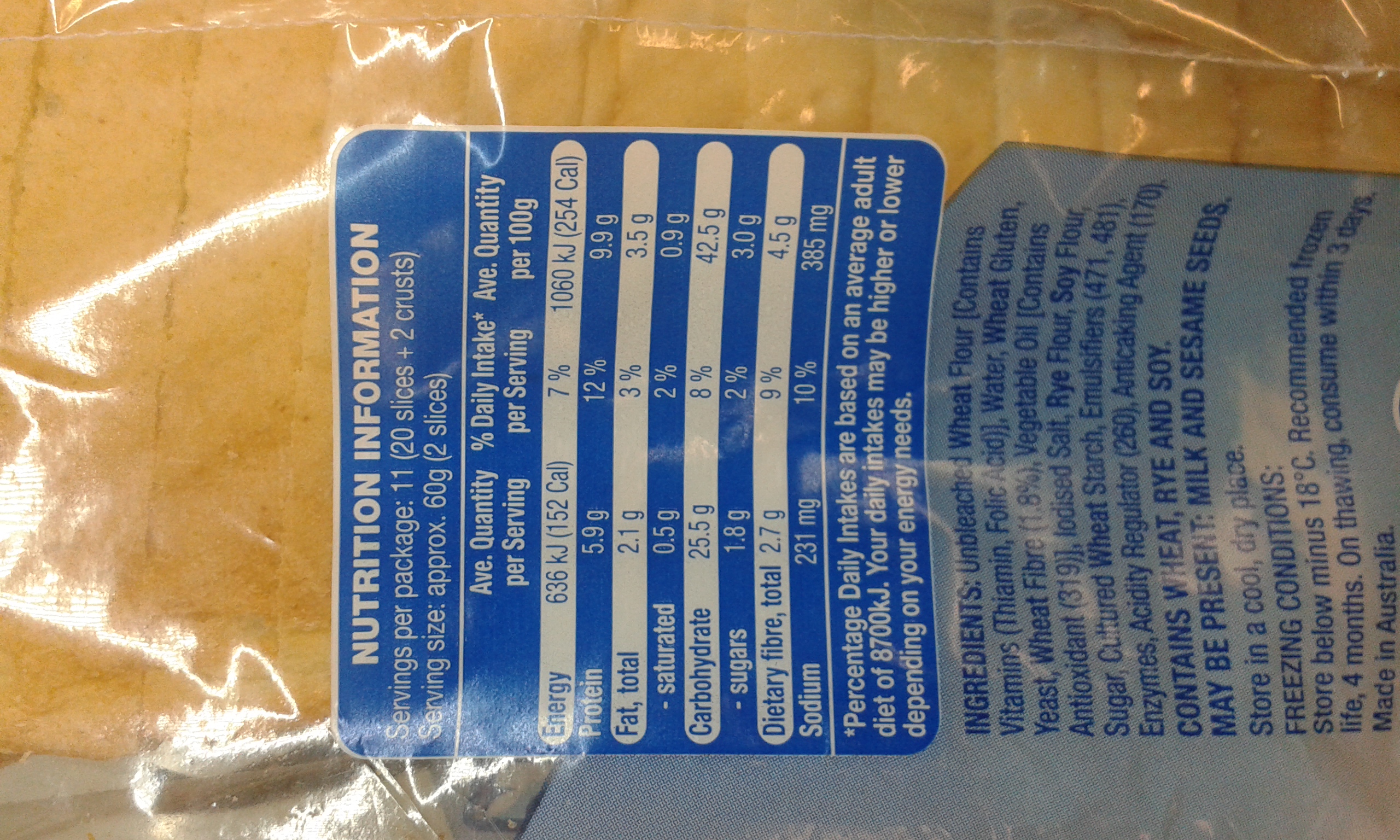
And do you fancy some sugar with your breakfast? Check-out the below highly processed cereals that receive a healthy 4-star rating and Heart Foundation Tick despite each containing more than 20% sugar:
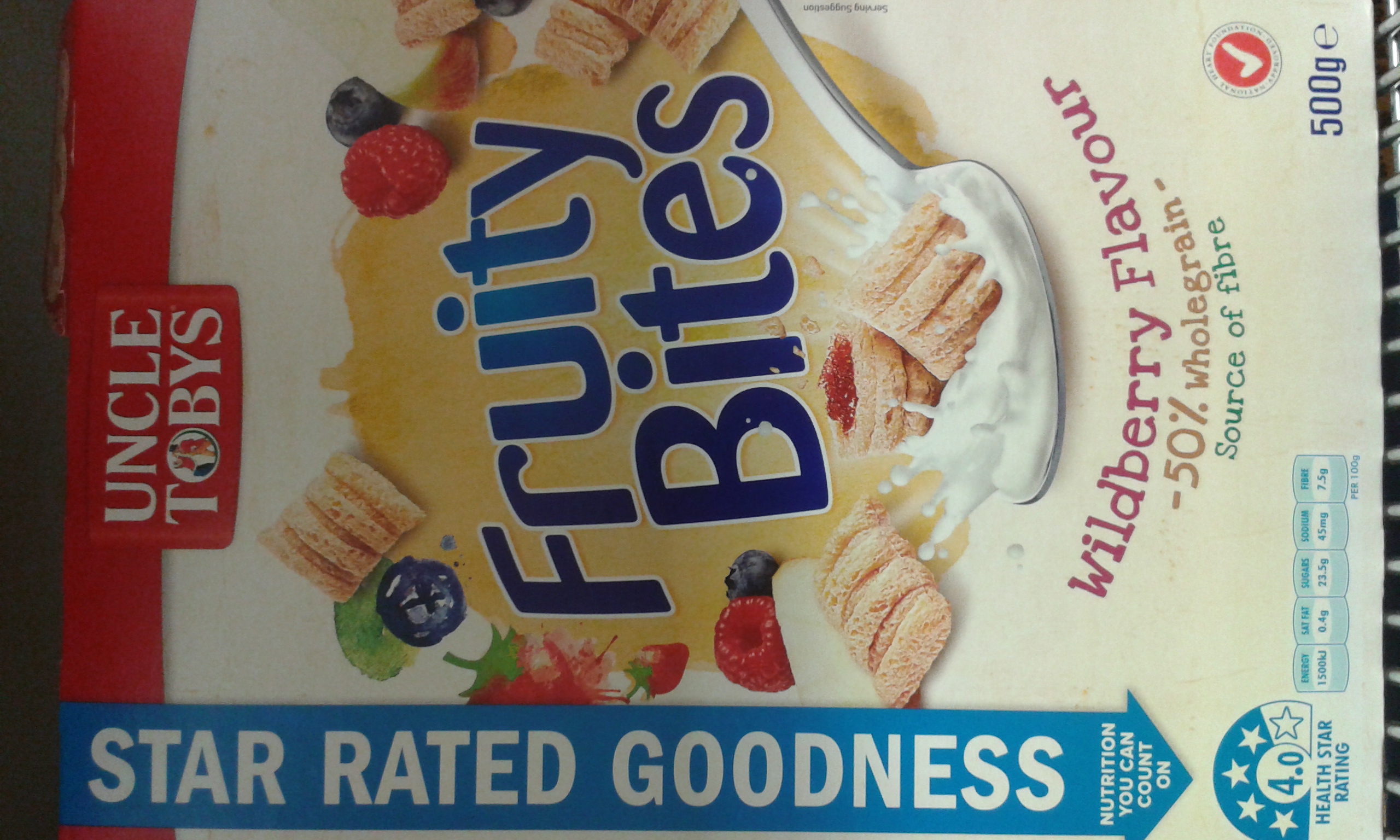
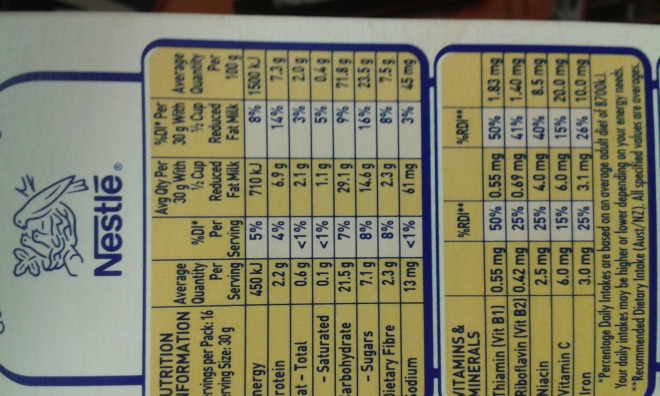

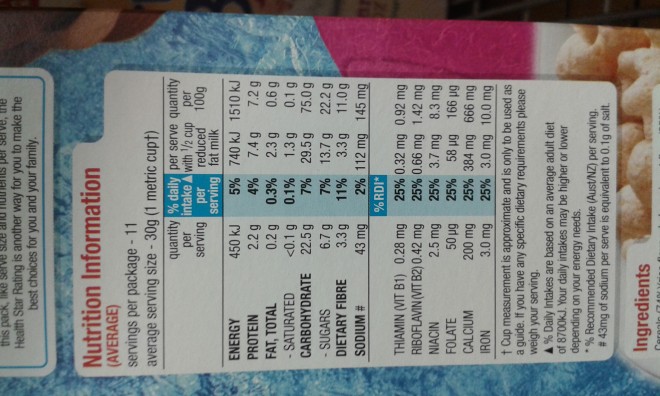

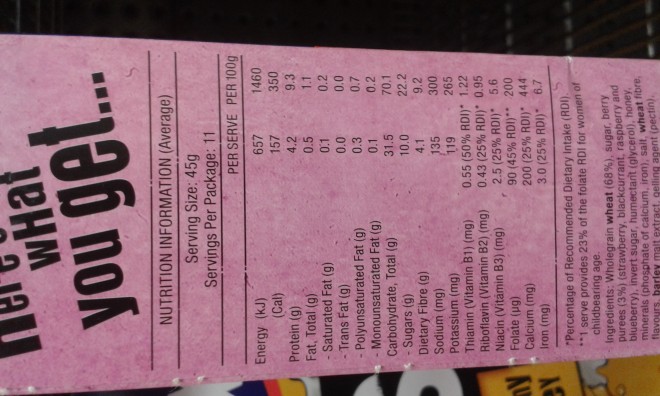
Or maybe you are too busy to eat cereal? No worries. Just down a processed sugary chocolate-flavoured “Up and Go” milkshake, which receives a farcical 4.5-star health rating:

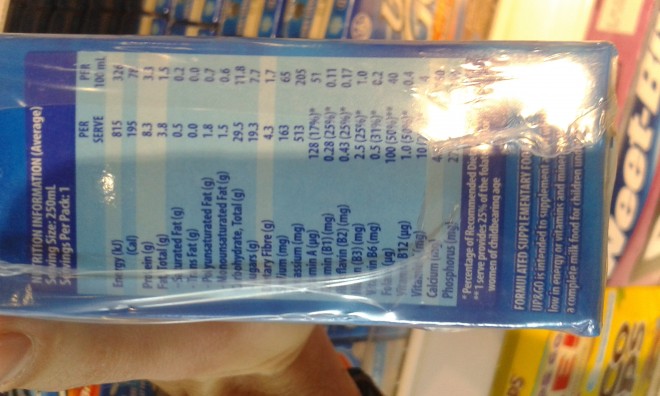
Or a 26.8 grams per serve of sugar glass of reconstituted apple juice, which receives a 5-star rating:
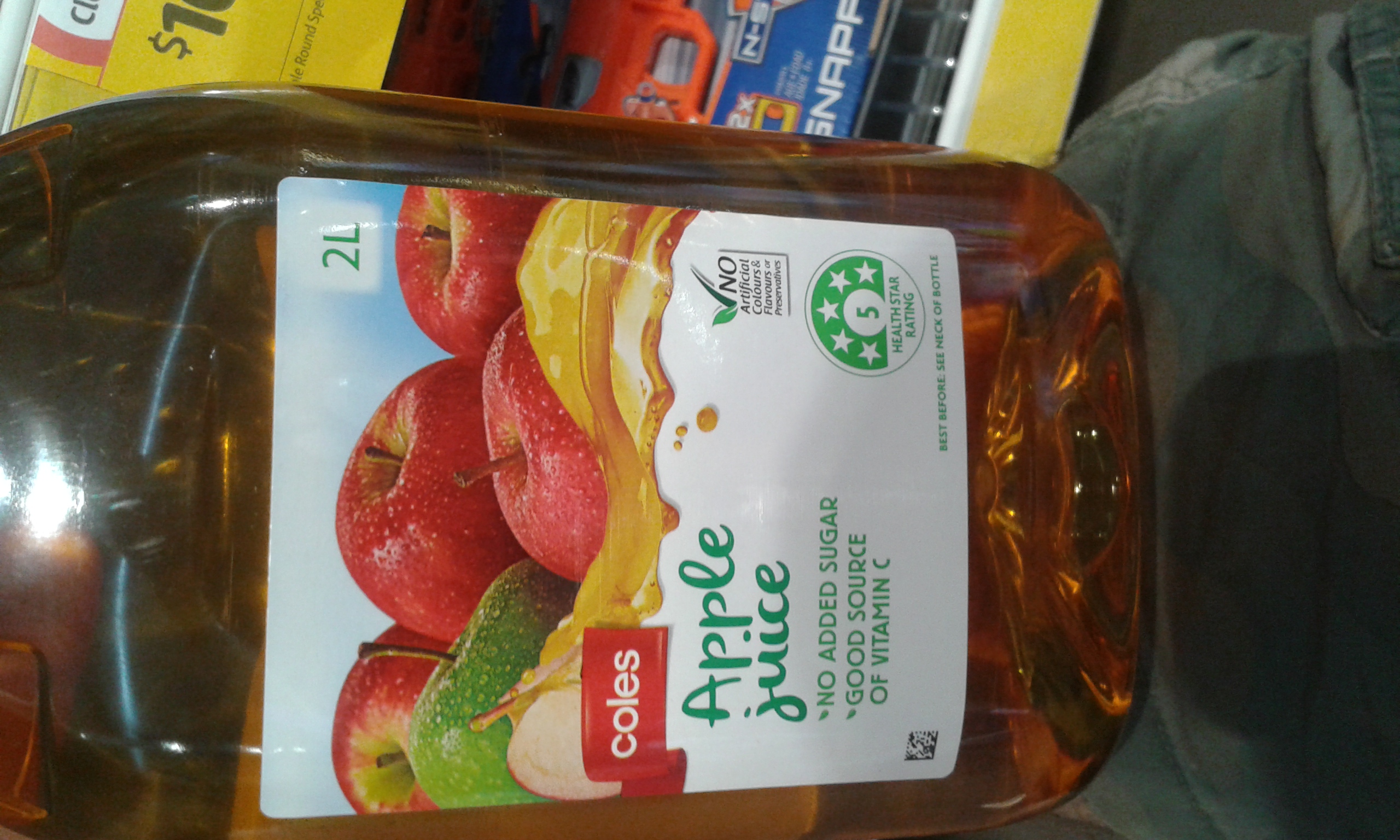
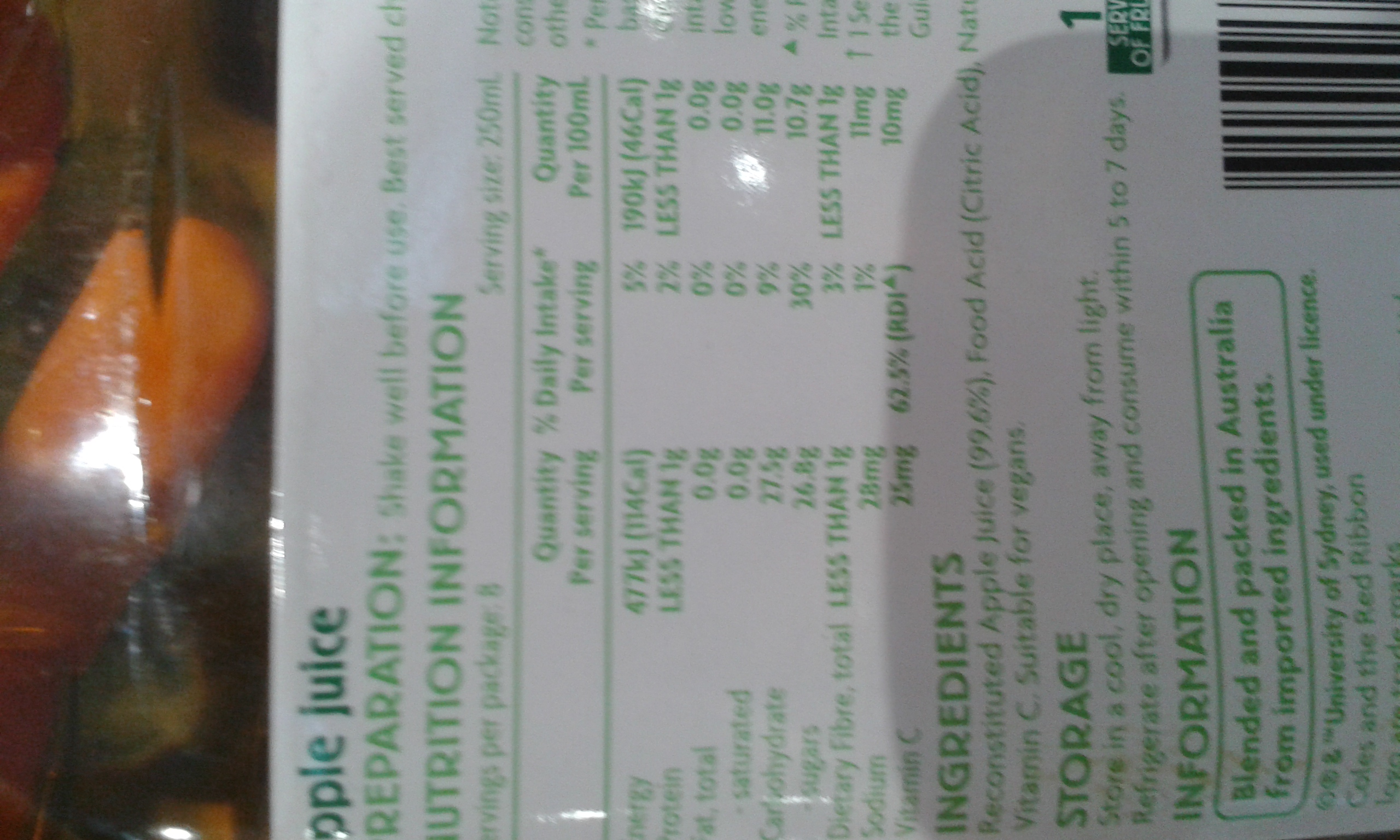
Or a sugary processed “Roll-up”, which contains 26.7% sugar, but somehow still manages a 3-star rating:

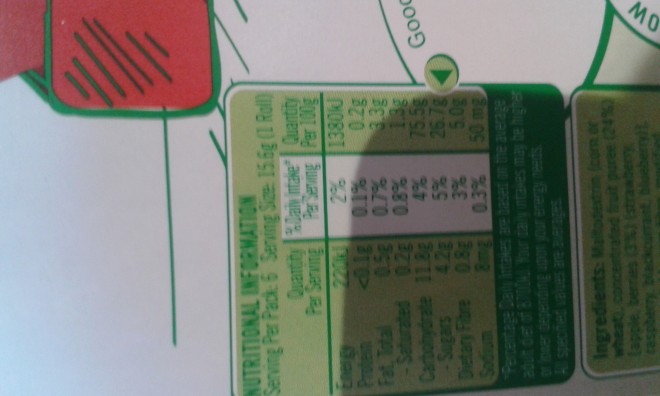
Or a couple of sugary muesli bars, which receive a 4-star rating despite containing around 20% sugar:
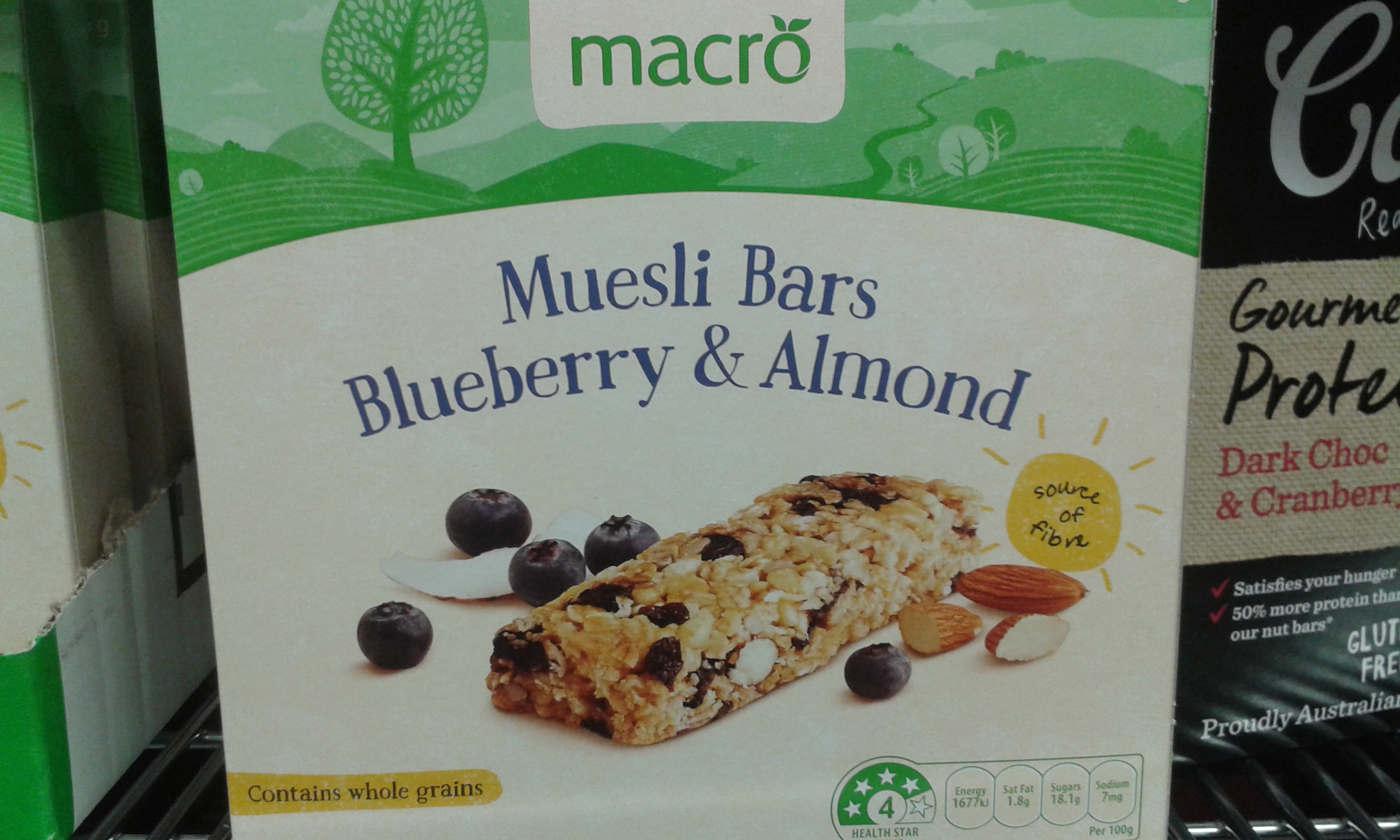
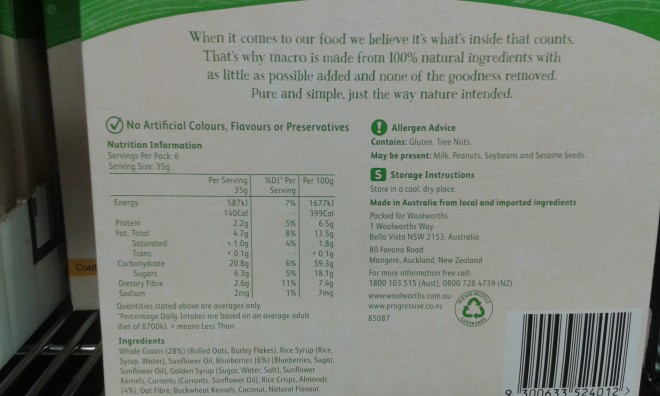

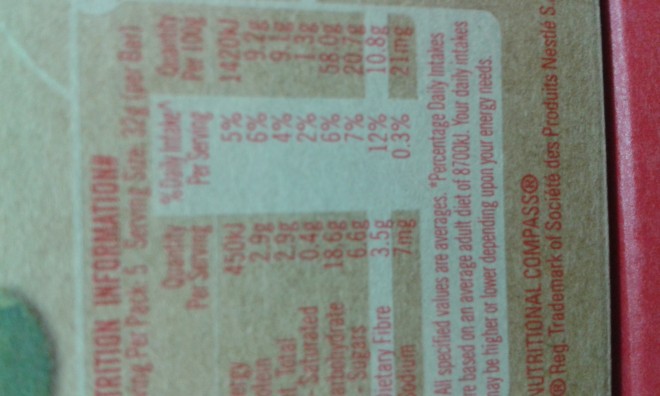
What should be abundantly clear from the above examples are that the Government’s Health Star Rating system and the National Heart Foundation Tick program largely ignore the high amounts of sugar in processed foods, while wrongly demonising saturated fat.
According to their own systems, a “healthy” breakfast would look something like the following:
- Two slices of white bread (Heart Foundation Tick – see above);
- One serve of Rice Bubbles Multigrain (4-star rating – see above); and
- One serve of apple juice (5-star rating – see above).
Just by consuming these alone (i.e. ignoring the milk and condiments), someone would ingest:
- 75.5 grams of carbohydrates of which 35.3 grams are sugar (roughly 8 teaspoons worth);
- 9.1 grams of protein; and
- 2.3 grams of fat.
Given the way that the different macro-nutrients affect blood sugar levels and insulin:
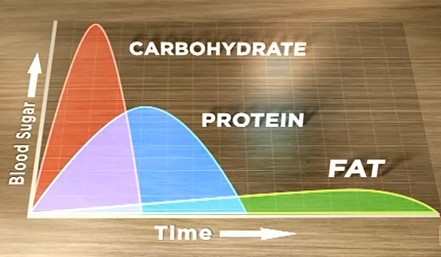
Is there any wonder why diabesity is a growing epidemic in Australia?
As long as they continue to view natural saturated fats as inherently bad and refined carbohydrates and sugars as benign, following the advice of the Government’s Health Star Rating system and the National Heart Foundation Tick program is very likely to do more harm than good.

